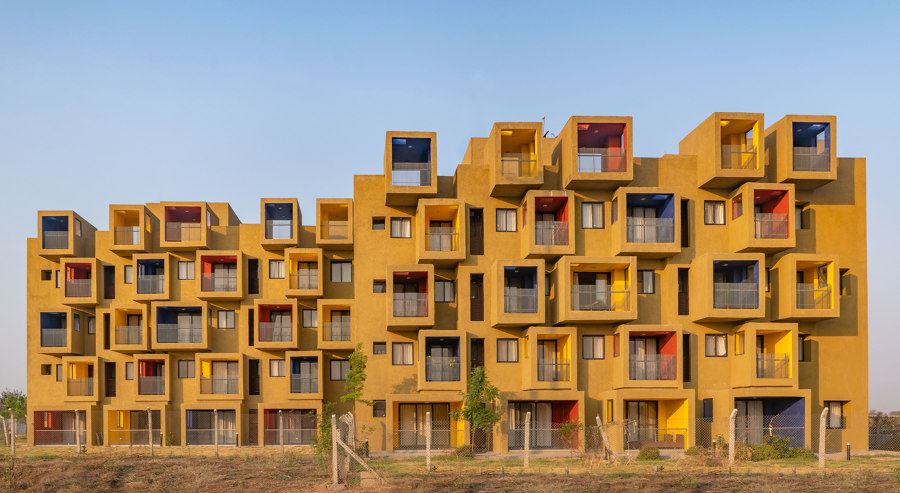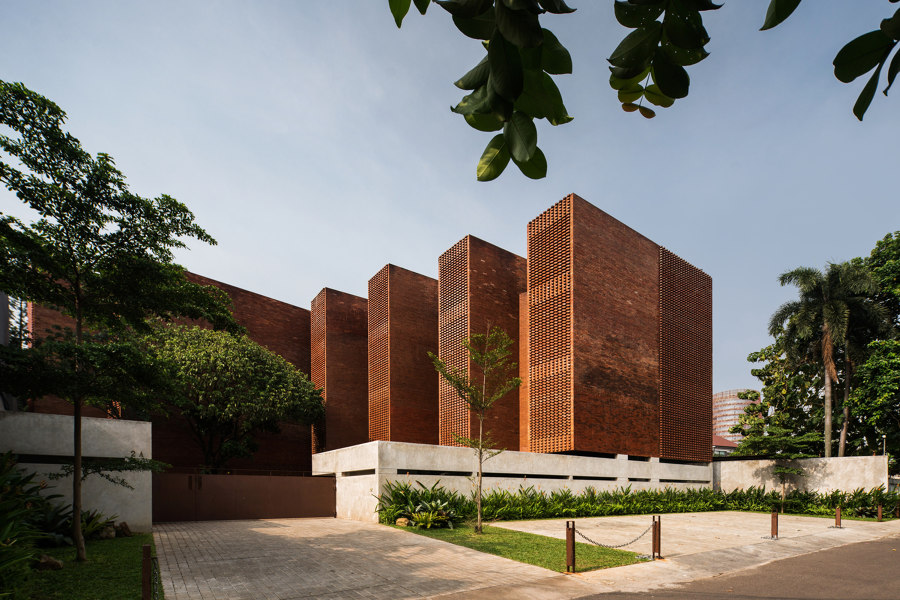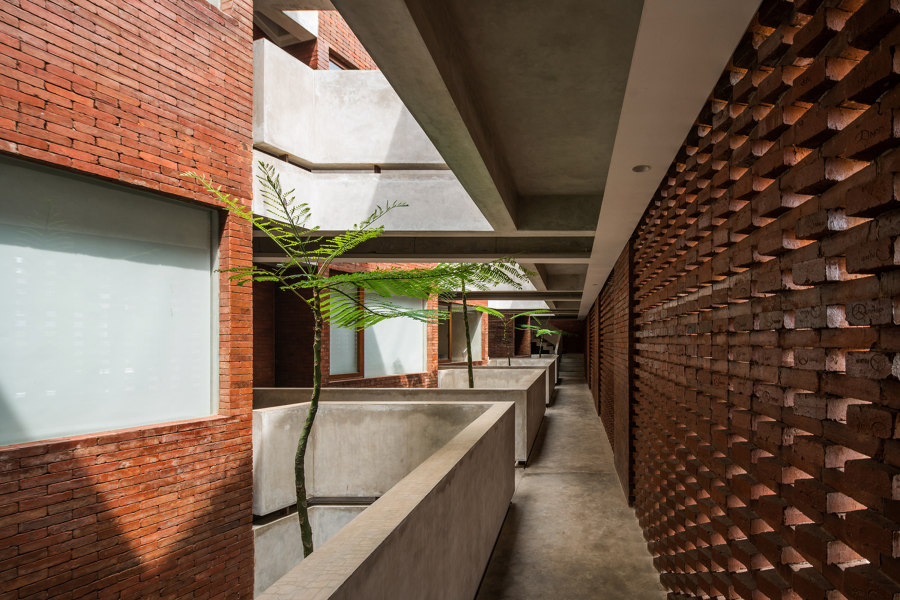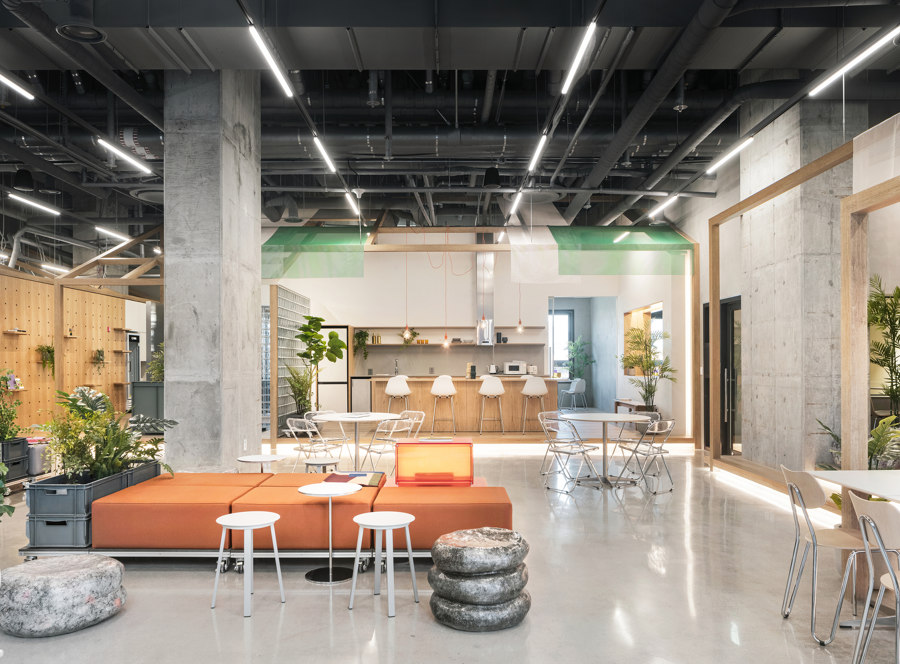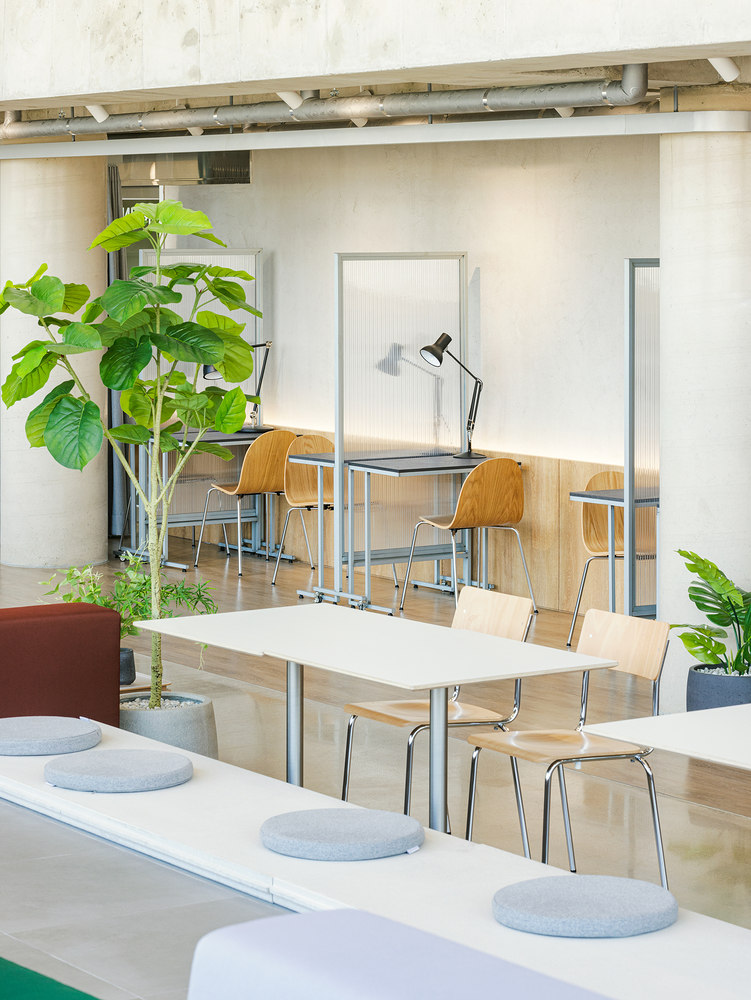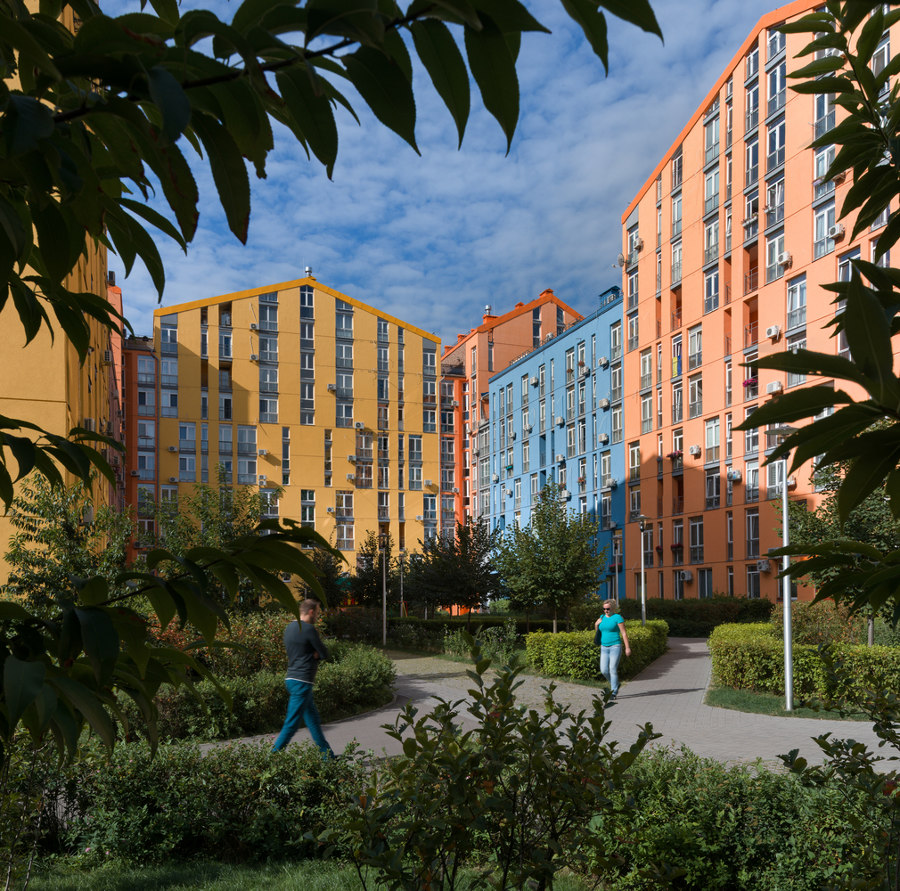Building communities: large-scale residential projects
Text by James Wormald
14.09.22
These colourful, sustainable and environmental multi-storey co-living projects make high-rise living friendly again.
archimatika’s Comfort Town Housing project in Kyiv, Ukraine, transformed 512,200 sqm of industrial land into a colourful community, pedestrianised with parks and playgrounds. Photo: Andrey Avdeenko
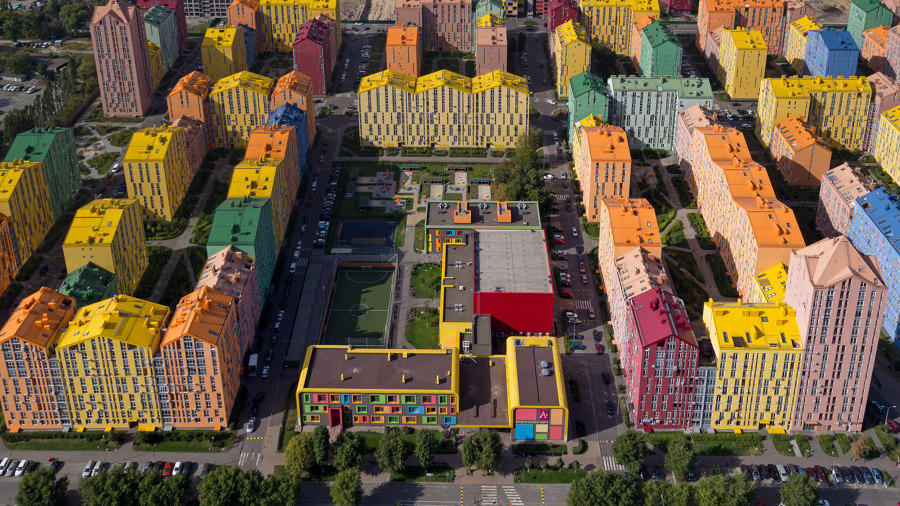
archimatika’s Comfort Town Housing project in Kyiv, Ukraine, transformed 512,200 sqm of industrial land into a colourful community, pedestrianised with parks and playgrounds. Photo: Andrey Avdeenko
×Are high-rise buildings bad for us?
Linked to issues of gentrification, ghettoisation and the widening spread of inequality between the two; increased feelings of isolation and loneliness; reduced access to green space and the dehumanisation of local environments, it’s often argued that they are.
By addressing these issues of sustainability, community and humanity, these four projects offer high-density living with a human touch
Then again, the current housing and environmental crises are not about to fix themselves. So although the sustainability of high-rise construction materials like concrete, steel and even glass is questionable, sharing those resources along with water, energy and most of all, space, just makes good sense, right? By addressing these issues of sustainability, community and humanity, these four projects offer high-density living with a human touch.
The Studios 90 buildings shield residents from the harsh Indian climate with communal roof terraces and open-air balconies for natural ventilation. Photos: Ricken Desai
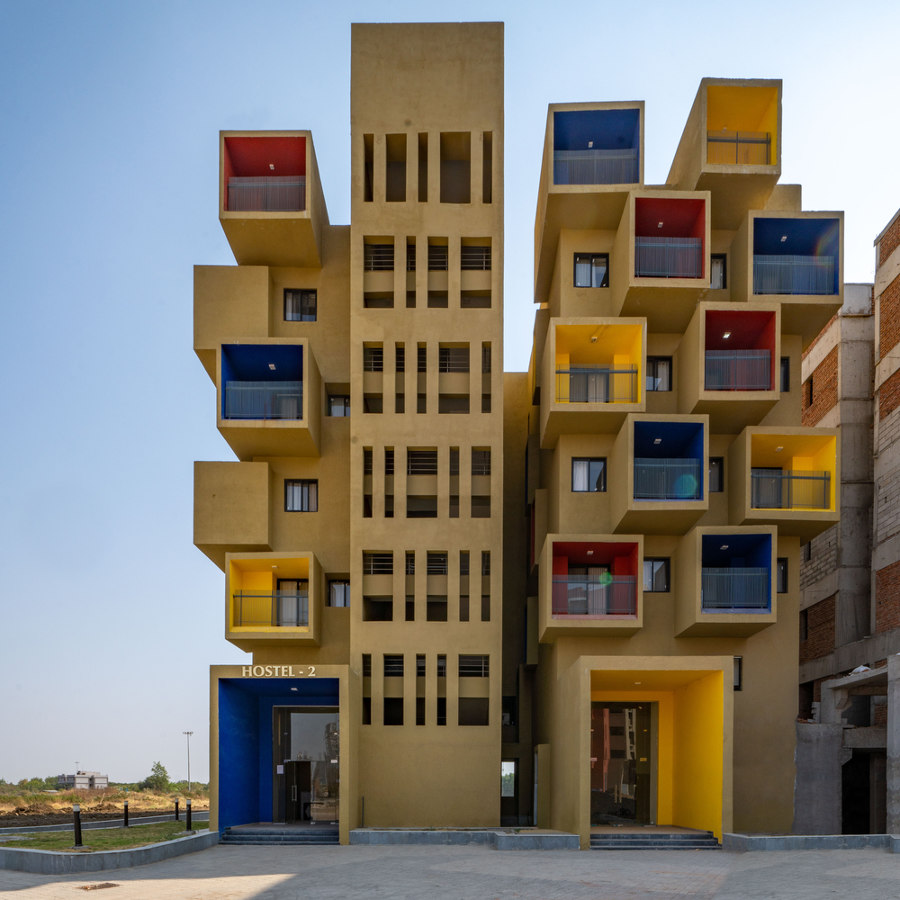
The Studios 90 buildings shield residents from the harsh Indian climate with communal roof terraces and open-air balconies for natural ventilation. Photos: Ricken Desai
×Studios 90 in Kodla, India, by Sanjay Puri Architects
Built in response to its environment, the Studios 90 residential township in Kodla, India, was built to house employees of a nearby cement factory in suitably comfortable living spaces. But with daily high temperatures consistently above 30 degrees for ten months of the year, Kodla is a difficult environment in which to get comfortable.
‘Angularly stepped in the layout, each of the rooms is oriented towards the north in response to the hot climate,’ explains Sanjay Puri Architects, with each unique living space enjoying access to a colourful cantilevered balcony. Along with a communal roof terrace, the sun-protected balconies provide natural ventilation and evening respite from the heat. The energy-efficient buildings also harvest their rainwater, recycle used water and utilise residual energy from the nearby cement works.
Kos Haji Baun (top) uses lattice brickwork to protect the peace of communal areas (middle), while mezzanines bring light to private rooms for both sleep and work (bottom). Photos: Ernest Theofilus
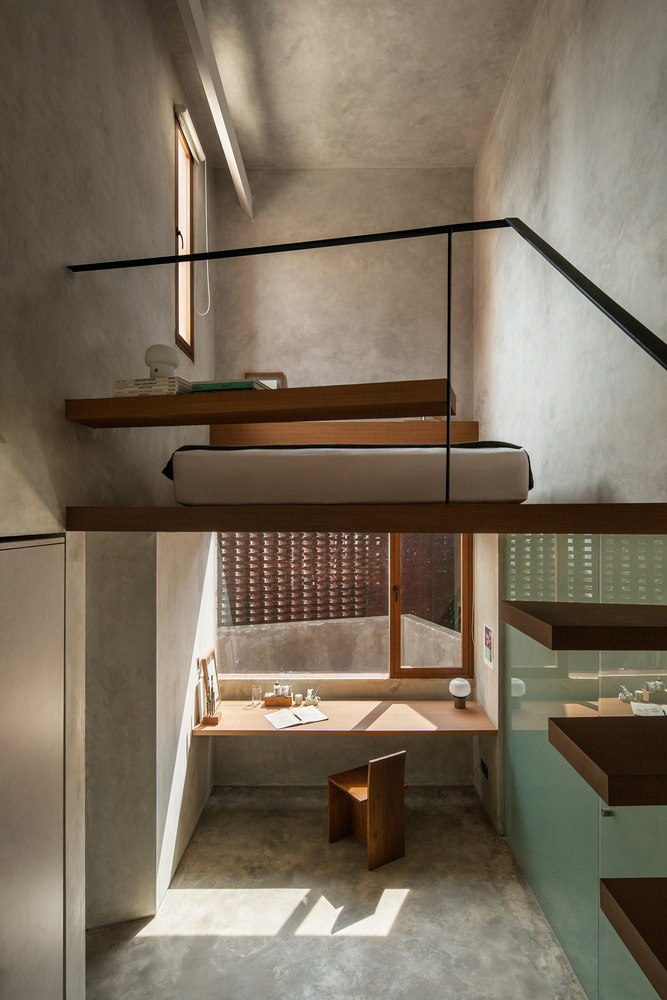
Kos Haji Baun (top) uses lattice brickwork to protect the peace of communal areas (middle), while mezzanines bring light to private rooms for both sleep and work (bottom). Photos: Ernest Theofilus
×Kos Haji Baun Public Residence in Jakarta, Indonesia, by FFFAAARRR
Densely populated with office buildings and served by the Lebak Bulus MRT station, the Simatupang area of South Jakarta includes many guesthouses, hostels and pocket-living spaces, for both city visitors and weekday office workers.
As the Kos Haji Baun buildings are family-operated, the brief was not to over-populate them with more rooms than they could handle, but instead to focus on the quality of the experience for each resident. By cutting down on room numbers, architects FFFAAARRR were able to include more shared public spaces such as communal seating, cooking and dining areas, served by latticed brick walls to efficiently filter incoming sunlight and temperature.
The brief was not to over-populate them with more rooms than they could handle, but instead to focus on the quality of the experience for each resident
Priority was given to comfort and peacefulness over spaciousness in the private rooms, too, with uncommon plus-signed floor plans using their naturally-formed architectural voids to protect residents’ privacy from neighbours, while interior mezzanines serve both sleep and work areas with sunlight.
Communal areas are pivotal to the Episode Co-Living complex in South Korea, with multi-use spaces including cafes (top), workspace (middle) and shared lounge areas (bottom). Photos: Yongjoon Choi
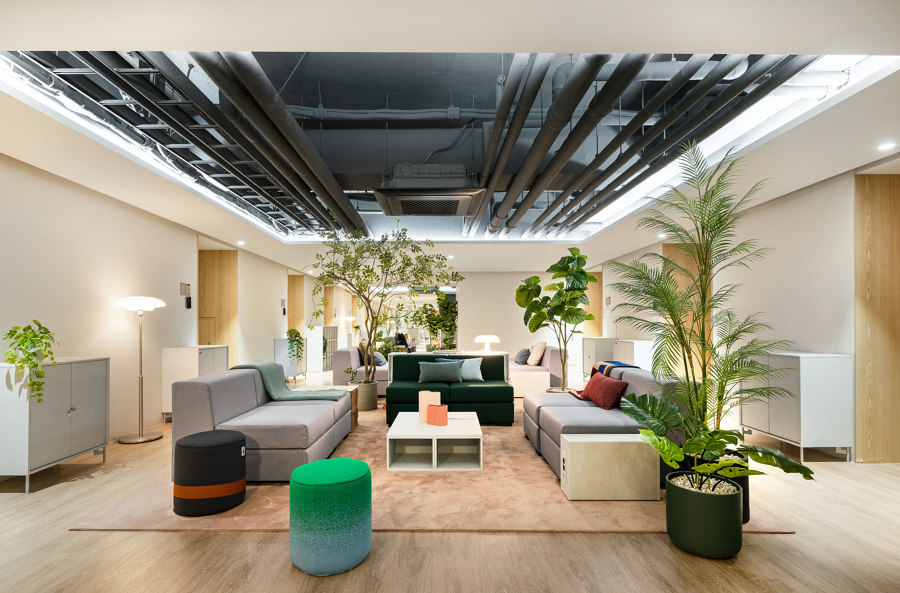
Communal areas are pivotal to the Episode Co-Living complex in South Korea, with multi-use spaces including cafes (top), workspace (middle) and shared lounge areas (bottom). Photos: Yongjoon Choi
×Episode Suyu 838 Co-Living Complex in Gangbuk-Gu, S. Korea, by Collective B
High-rise residential buildings, intended to halt the unwanted sprawl of a growing urban area, are often accused of simply creating ‘vertical sprawl’ instead, with residents feeling more disconnected and isolated the higher up the tower they are. But Episode Suyu 838 Co-Living Complex architects, Collective B, describe the building as a self-contained vertical village. ‘Under the concept of the village with a lively connection,’ Collective B explains, ‘the goal is to provide a shared experience by creating natural contact points.’
With flexible communal spaces including a cafe, gym, lounge and areas for co-home-working, mostly built from recycled materials, Episode residents also join together to partake in community social and cultural events such as gardening classes and on-site concerts.
The Comfort Town Housing project positions colourful buildings around green spaces (top), schools, retail and leisure facilities (middle), and safe car-free zones (bottom). Photos: Andrey Adveenko
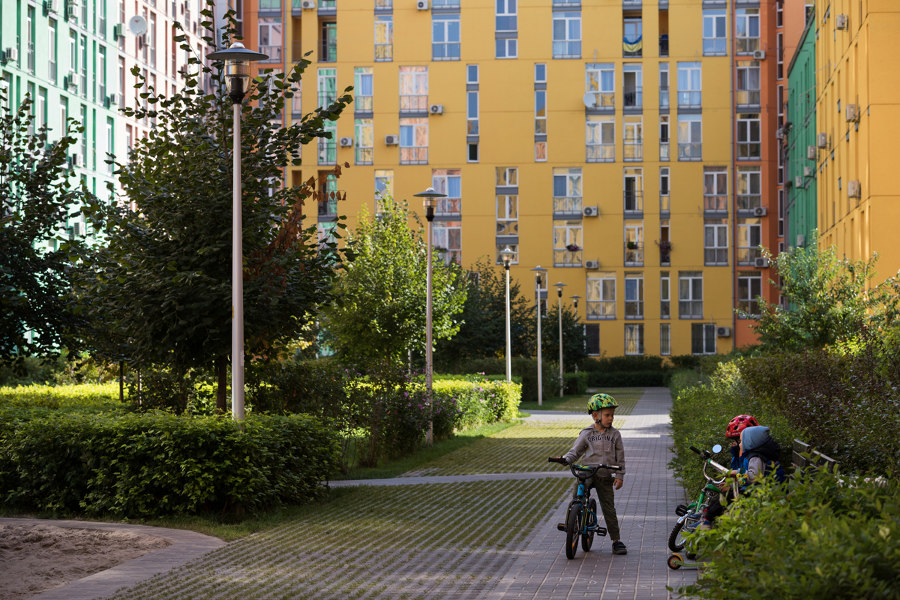
The Comfort Town Housing project positions colourful buildings around green spaces (top), schools, retail and leisure facilities (middle), and safe car-free zones (bottom). Photos: Andrey Adveenko
×Comfort Town Housing in Kyiv, Ukraine, by archimatika
For young, social generations moving to a new city and looking to make friends, co-habitation is both welcomingly inexpensive and immersive. But as people grow older and start families, personal space and privacy gain more importance. With a variety of alternatively designed apartments, including single or multiple bedrooms, en-suites and open-plan living, archimatika’s 512,200 sqm mega-project, Comfort Town Housing, gives resident families room to breathe, amongst local amenities for practically anything else.
The township, filled with joyful shapes and colour to counter a budget-restricted lack of architectural flair, hasn’t neglected the sense of community provided by co-living spaces, with civic amenities such as schools, childcare, leisure facilities, retail and hospitality and as many as 22 playgrounds sprinkled amongst the residential blocks, connecting everything together with a network of green pedestrianised pathways.
© Architonic
Head to the Architonic Magazine for more insights on the latest products, trends and practices in architecture and design.

